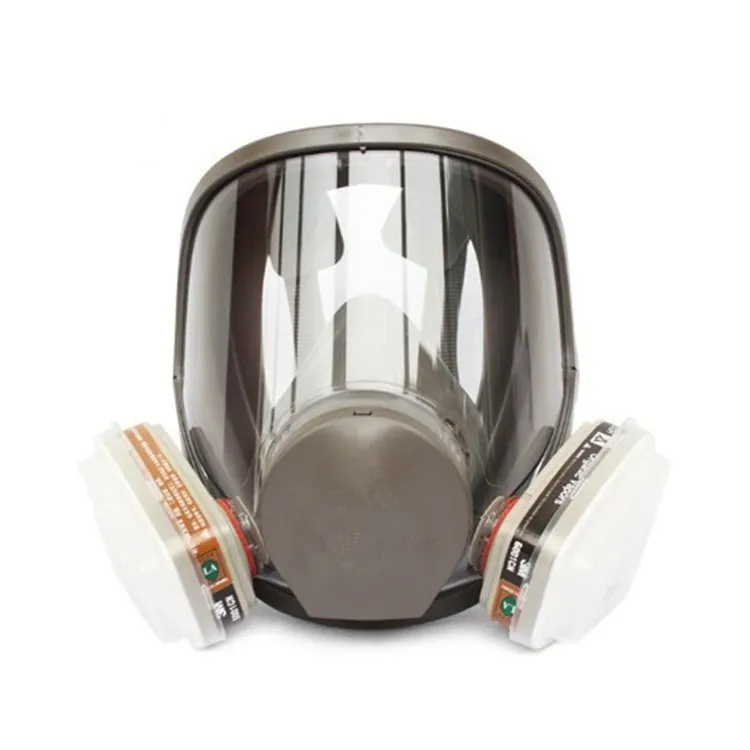Why Is a Gas Mask an Essential Safety Tool in Today's World?
2024-11-18
In a world where environmental hazards, industrial accidents, and health risks are ever-present, gas masks have become a critical component of personal protective equipment (PPE). But why exactly are gas masks so important, and how do they function to protect us from harmful gases and particulates? Whether you’re a first responder, a worker in a hazardous environment, or simply someone concerned about air quality, the gas mask is a tool that shouldn’t be overlooked. Let’s explore why this safety device is essential in today’s world.
What Is a Gas Mask?
A gas mask is a device designed to protect the wearer from inhaling dangerous substances such as toxic gases, airborne pollutants, or harmful particles. It typically consists of a tight-fitting facepiece with a filter that traps harmful contaminants before they can enter the respiratory system. Modern gas masks may also include additional features such as eye protection and communication systems.
Why Are Gas Masks Important for Safety?
1. Protection Against Toxic Gases
One of the most important functions of a gas mask is to protect against harmful gases that can be present in industrial environments, laboratories, or during natural disasters. These gases could include chlorine, ammonia, carbon monoxide, and various chemical vapors. A gas mask filters out these dangerous substances, preventing them from reaching the respiratory system.
2. Defense Against Particulate Matter
In addition to toxic gases, a gas mask also protects against harmful particles such as dust, pollen, mold spores, and biological agents like viruses or bacteria. This is especially important in industries like construction, farming, or in areas impacted by pollution and wildfires.
3. Emergency Preparedness
Gas masks are a critical piece of emergency preparedness, especially in scenarios such as chemical spills, nuclear accidents, or even terrorist attacks involving chemical agents. Having a gas mask on hand can mean the difference between life and death in a hazardous situation.
4. Protection in Hazardous Work Environments
Industries such as firefighting, mining, and manufacturing often expose workers to dangerous airborne chemicals and particles. Gas masks, along with other PPE, are mandatory in these environments to ensure the safety and health of the workforce.
5. Respiratory Health and Protection
In everyday life, gas masks can also be useful for individuals with respiratory conditions like asthma or those living in areas with high pollution. Airborne pollutants such as car emissions, industrial fumes, or smoke from wildfires can worsen these conditions, and wearing a gas mask provides an added layer of protection.
Who Should Consider Using a Gas Mask?
- First Responders: Police, firefighters, and emergency medical personnel often work in environments where toxic gases or harmful particulates are present.
- Workers in Hazardous Industries: Those in construction, mining, and chemical plants are at a high risk of exposure to dangerous substances.
- Preppers and Survivalists: Individuals who prioritize preparedness for natural disasters, civil unrest, or biological threats often keep gas masks as part of their emergency kits.
- People with Respiratory Conditions: Those who suffer from asthma, allergies, or other breathing problems may benefit from the added protection gas masks offer, especially in polluted areas.
- Anyone Concerned About Air Quality: With growing concerns about air pollution, wildfire smoke, and airborne viruses, a gas mask can be a practical safety tool.
What Types of Gas Masks Are Available?
1. Full-Face Gas Masks
These masks cover the entire face, including the eyes, and offer a higher level of protection against both gases and particulates. Full-face masks are often used by emergency responders and industrial workers.
2. Half-Face Gas Masks
These provide coverage for the nose and mouth, offering protection against inhalation of harmful substances. They are typically lighter and more comfortable but offer less protection than full-face masks.
3. Powered Air-Purifying Respirators (PAPR)
These are more advanced masks that use a battery-powered fan to provide clean air to the user, offering a higher level of comfort and protection. They are commonly used in healthcare settings or high-risk environments.
4. Escape Masks
Designed for emergency situations, escape masks are compact and easy to use. They are typically worn for short durations, offering protection against specific gases or toxins in immediate danger zones.
What Are the Key Features to Look for in a Gas Mask?
- Fit and Comfort: A gas mask should provide a secure, tight fit to prevent contaminants from entering around the edges. Comfort features like adjustable straps and padded linings can make wearing the mask more tolerable for extended periods.
- Filter Efficiency: The effectiveness of a gas mask largely depends on the filter. Be sure to choose a mask with filters that are suitable for the specific contaminants you may face.
- Durability and Quality: Choose a mask made from high-quality, durable materials to ensure long-term use and effectiveness.
- Visibility and Field of Vision: A clear lens or face shield is essential for maintaining vision while wearing a gas mask.
Conclusion
Gas masks are vital tools for ensuring safety in environments where harmful gases, particles, or biological threats are present. Whether you’re a worker in a high-risk industry, a first responder, or someone living in a polluted area, a gas mask can provide essential protection for your respiratory health.
Are you prepared with the proper protective gear? Let us know your thoughts on gas masks and how they can enhance safety in your life!



